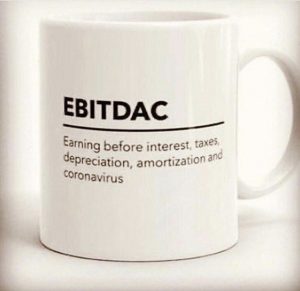Protect The Business Most Valuable Asset
A compelling and common characteristic of successful business owners is optimism. The “glass is always half full” attitude results in the risk-taking, perseverance, and innovation it takes to build, grow, and protect a successful business. Like any personal strength, this optimism can quickly become a weakness when there is a need to plan for the gloomy business contingencies of death and disability. What happens to the business due to either of these less than optimistic events is the last thing an optimistic owner wants to think about.
Some might say that perhaps owners don’t care if the business fails due to their inconvenient incapacitation. However, our experience shows that most owners care about what happens to the business and its stakeholders. We also observe that the plan in place is often deficient. For example, one area most often overlooked is preparation for the owner’s potential permanent disability.
Is The Business Owner Protected?
It is fairly common for a business owner to have a level of life insurance protection (although often outdated or in need of review) to benefit their business as well as their family in the event of death. But it is not nearly as common to see the risk of permanent disability addressed adequately, if at all.
Becoming disabled for more than three months are greater than the chances of dying at every age:
• Over one in four 20-year-olds will become disabled before reaching age 67. (1)
• At Age 30 – the chances of disability are approximately 2.3 times greater than death
• At Age 40 – the chances of disability are about twice that of death
• And finally, at Age 50 – disability is 50 percent more likely than death (2)
• Not only does the risk of disability rise as we get older, but the severity of any disability that is incurred also tends to increase with age (3)
Permanent disability (or death) and incapacitation would most likely have the same impact on your business as the loss of any key employee would have. All that you bring to the table makes the business a success. Experience, talents, knowledge, and relationships would all be tough to replace. There could also be additional challenges such as the loss of concerned stakeholders, weakening financial strength, bank financing re-examined, bonding capabilities interrupted, potential non-renewal of personally guaranteed leases, etc. All as a result of your not being able to work in the business.
Protect Business Value. Have a Plan.
The bottom line is, in the event of premature permanent disability or incapacitation, the value of the business could decrease significantly. All stakeholders are impacted. And the family, if dependent on the continual success of the business, is impacted similarly. Make sure to thoroughly thought through this risk with an insurance professional. Too often, it’s neglected entirely. Please note, you can contact us for any assistance needed.
Invest 15 Minutes and take our FREE Exit Readiness Assessment. We do not request any confidential information.
Pat Ennis is the President of ENNIS Legacy Partners (ennislp.com). The mission of ELP is to help business owners build value and exit on their own terms and conditions.
Endnotes:
(1) The Facts about Social Security’s Disability Program, Social Security Administration Publication No. 05-10570, January 2018.
(2) 1985 Commissioners’ Disability Individual Table A and 1980 Commissioners’ Standard Ordinary Mortality Table.
(3) Americans with Disabilities: 2010, U.S. Census Bureau, Current Population Reports, July 2012.

 A bleak joke, but one that is on the minds of many business owners, especially Baby Boomers in their late 50s and 60s. Many were postponing their exit planning because business has been so good. As one client told me, “In March we had the best year in the history of my company. It looks like April might be the worst.”
A bleak joke, but one that is on the minds of many business owners, especially Baby Boomers in their late 50s and 60s. Many were postponing their exit planning because business has been so good. As one client told me, “In March we had the best year in the history of my company. It looks like April might be the worst.” It may be dramatic and immediate, or it may be only obvious afterwards when your performance is matched against that of your peers.
It may be dramatic and immediate, or it may be only obvious afterwards when your performance is matched against that of your peers.
 Numerous educators and managers have related to me the effect of the Internet. Students resist rote learning. Employees refuse to train in procedures. Their answer is ubiquitous; “Why do I have to know that? I can look it up whenever I need it.”
Numerous educators and managers have related to me the effect of the Internet. Students resist rote learning. Employees refuse to train in procedures. Their answer is ubiquitous; “Why do I have to know that? I can look it up whenever I need it.” All business owners want to grow their companies, make more money and work a bit less, but few things are more disappointing than finding out that the work you put in won’t result in the outcome you expected.
All business owners want to grow their companies, make more money and work a bit less, but few things are more disappointing than finding out that the work you put in won’t result in the outcome you expected. All these questions should be part of your planning. Yet most owners don’t ask them until they are on the brink of retiring. That is a mistake. Knowing what you want to accomplish, or in other words – where your finish line is, is critical to building your business in the right way, in the right direction.
All these questions should be part of your planning. Yet most owners don’t ask them until they are on the brink of retiring. That is a mistake. Knowing what you want to accomplish, or in other words – where your finish line is, is critical to building your business in the right way, in the right direction.